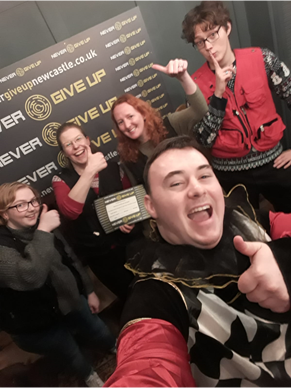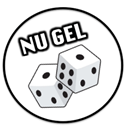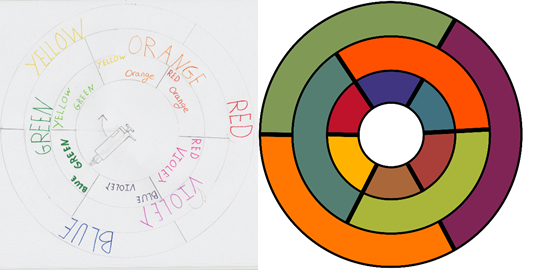By Cameron Hubbard, PGT student, School of Natural and Environmental Sciences
Students don’t like being lectured. You can see it within the first 20 minutes of a lecture: eyes go dark, phones come out, their attention fades away. Lecturers are constantly trying to increase student engagement but trying to do this via traditional “talk and chalk” methods is flawed. In addition, some content just doesn’t lend itself well to a lecture-based format – especially things like lab and field skills. Thus, novel methods of presenting content are required that capture students’ attention whilst also having an educational benefit. An emerging pedagogical technique is teaching through games, which has been the focus of my internship in the Game-Enhanced Learning (GEL) project.
Since joining the team in October 2018, I have been designing fun and educational games aimed at delivering key course content to undergraduates in the School of Natural and Environmental Sciences (SNES). Games are a fantastic method for teaching and are under-utilised in education, especially STEM subjects. Though the field of GEL is still in its infancy, evidence suggests that educational games increase student engagement, attain results as good as traditional teaching and boost student satisfaction. Additionally, allowing students to learn through games enables them to fail without fear of consequence. Instead of receiving a poor grade on an assignment or botching several weeks’ worth of experiments, games provide a safe environment for students to fail and learn from that failure.
Our project has focused on the development of three games – Shore Thing to teach decision making in wind farm placement, Microbial Munchkin, which aims to teach key immunology and parasitology concepts, and Pipette Palette to teach pipetting skills. This final game, Pipette Palette, was the first game I designed for the project and is also the one I’m most proud of! In this game students compete to pipette minute amounts of red, blue or yellow coloured fluid into their beaker to create a target colour. This target colour is decided via a spinner on a colour wheel (a little bit like the one in Twister!). At the start of each round it is spun, it lands on a colour, and that’s the colour everyone races to create. The first person to create the colour wins the points for that round.
When designing the game, I wanted to create something short and simple. I found my own experiences of being taught to pipette were extremely long, and a lot of the board games I’ve played take far too much time to explain to friends! I also wanted to add a random element to the game, which ended up being the spinner, so that no two sessions of gameplay would be the same – this would (hopefully) prevent players getting bored too quickly. The game couldn’t be too random, however, and so I split the colours into different difficulties (easy, medium, hard) to allow players to choose the level of challenge but not the exact colour each round. This also allowed me to allocate different point values to each difficulty, allowing for players to make strategic decisions each round – a player in the lead may choose an easy challenge, worth fewer points, in case they fail, preventing other players from catching up too quickly. Likewise, a player in last place may choose the hardest difficulty as they’re desperate for points and have nothing to lose.
With these ideas in mind it made sense to create a spinner (first and final drafts pictured below) to prevent things getting too complicated. The alternative was three separate decks of cards filled with duplicates of each colour but, after consulting the other members of the project team, we went ahead with the spinner.
Alice, a fellow intern, and I have had the pleasure to present our work on the project twice – first at an Edubites session and most recently at the Learning and Teaching Conference here at Newcastle. Despite nerves, both talks were supremely rewarding and fantastic for the development of the project. One of the issues our team runs in to is that we are all from STEM background and thus have little experience outside of that area – presenting to and getting feedback from such a wide and diverse audience allows us to break free of that mindset and come up with new and fresh ideas. To that end I’d love to ask you all – what ideas can you come up with to implement games in your teaching?
Further reading
To get you started here is some further reading, including examples of games and studies showing the effects of implementing game-based learning:
Charles T, Bustard D, Black M (2011) Experiences of promoting student engagement through game-enhanced learning. In Serious Games and Edutainment Applications (pp. 425-445). Springer, London.
Coil DA, Ettinger CL, Eisen JA (2017) Gut Check: the evolution of an educational board game. PLoS Biology 15:e2001984.
Khan A, Ahmad F, Malik MM (2017) Use of digital game based learning and gamification in secondary school science: the effect on student engagement, learning and gender difference. Education and Information Technologies 22:2767-2804
Kinio A, Dufresne L, Brandys T, Jetty P (2017) Break out of the classroom: the use of escape rooms as an alternative learning strategy for surgical education. Journal of Vascular Surgery 66:e76
Leaning M (2015) A study of the use of games and gamification to enhance student engagement, experience and achievement on a theory-based course of an undergraduate media degree. Journal of Media Practice 16:155-170.



